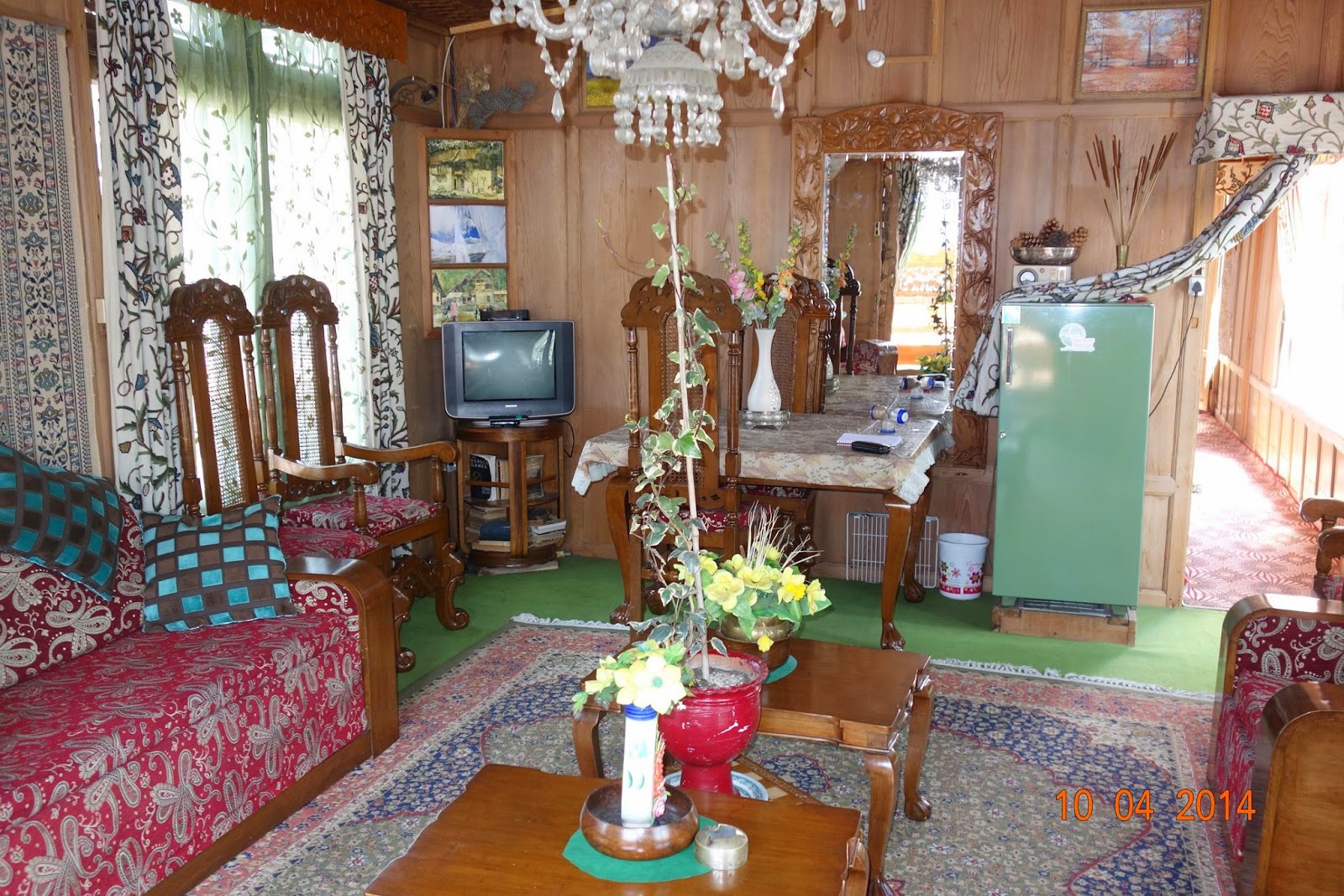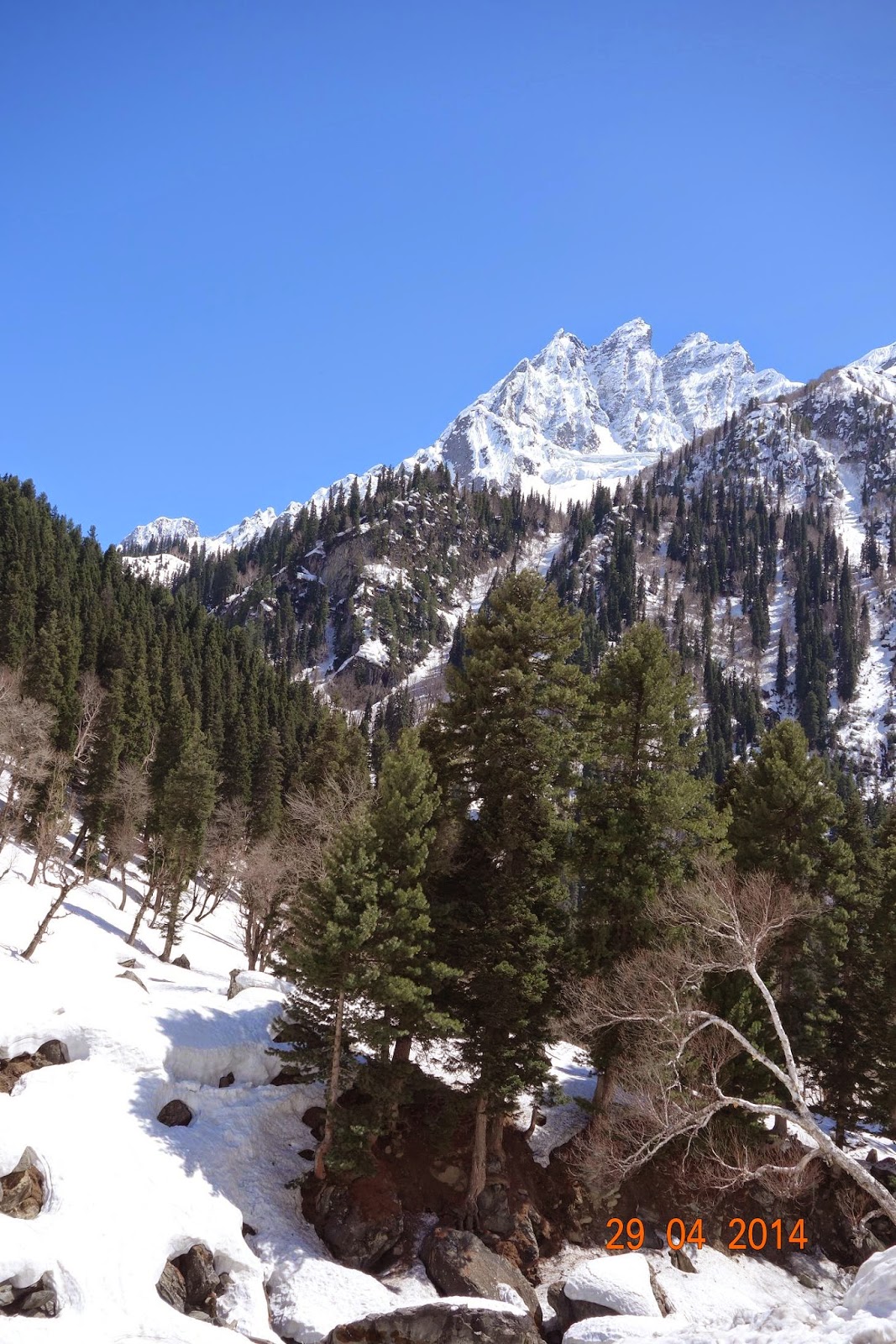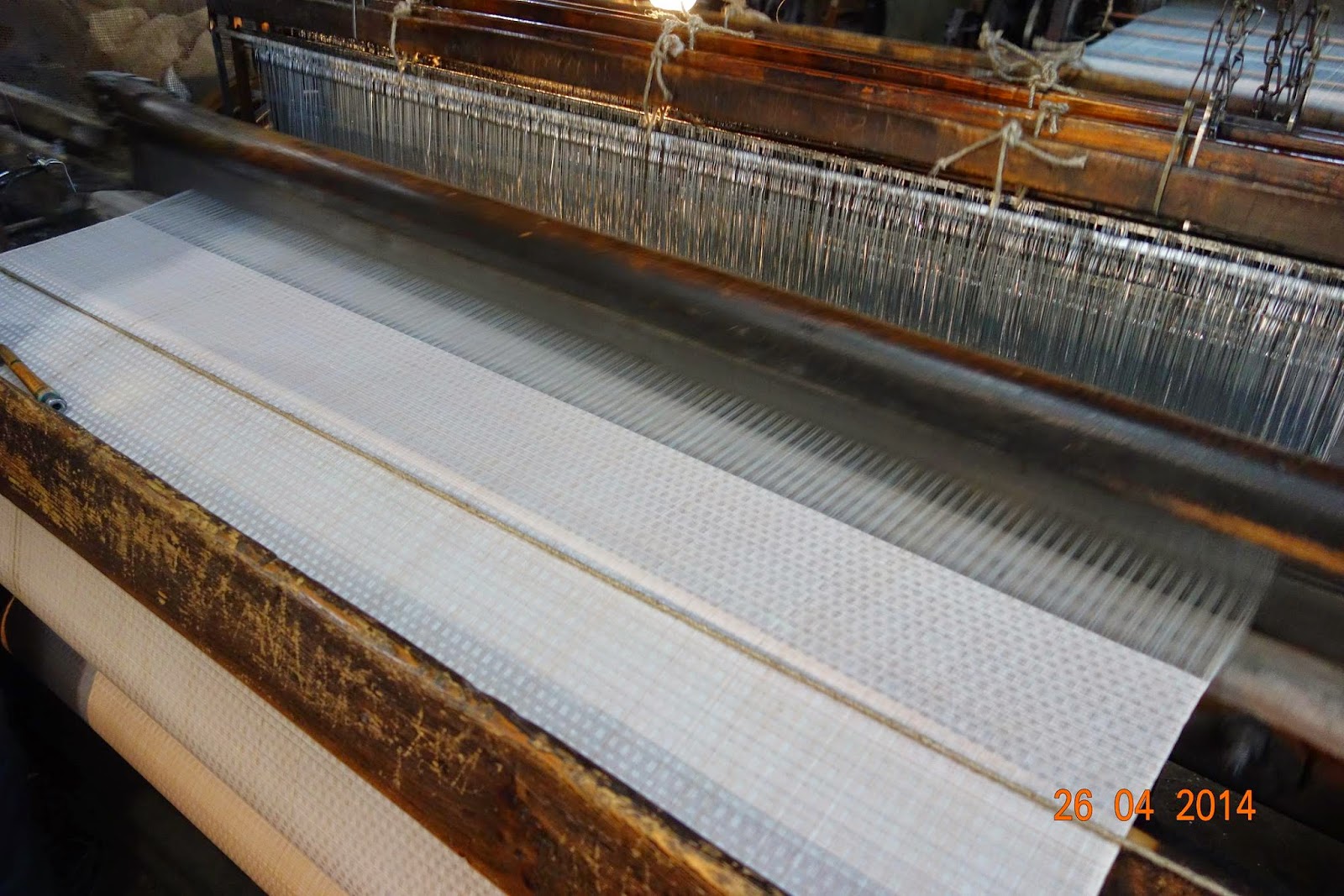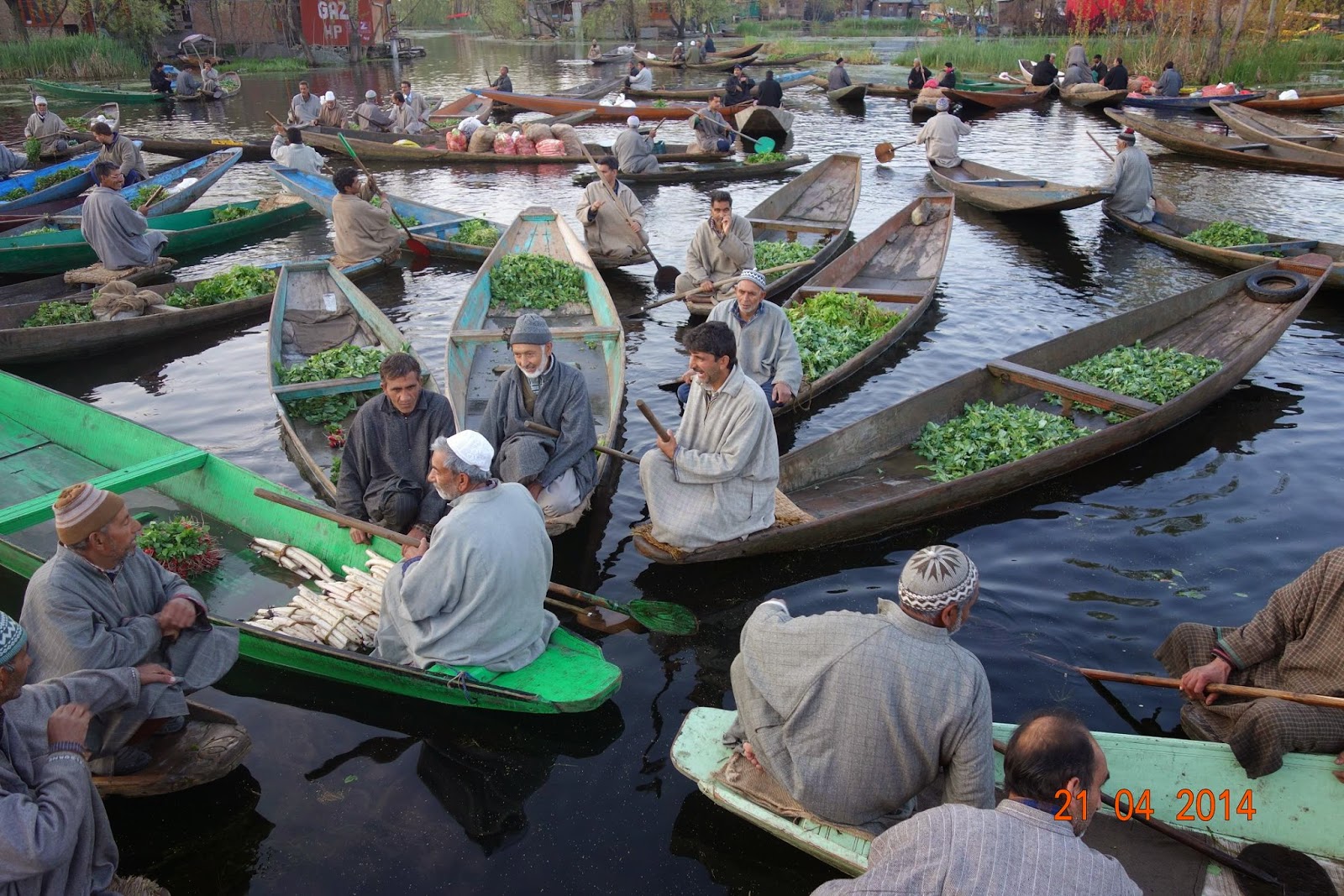The scenery is stunning, the "Crown of India". Situated more in Central Asia, being surrounded by vast mountain ranges which cut it off from India to the south. Culturally is is also more part of Central Asia. It is bordered by China, Afghanistan, Pakistan and Tibet. The state is crossed by 6 mountain ranges, including the Himilayas and Karakoram and three great rivers, the Indus, Jhelum and Chenab. Snow clad mountains, still lakes and lush green meadows and rushing chilly rivers.
I have been here five times before, this time it was not possible to go to Ladakh, as the mountain passes are still blocked by snow and will not be clear until June. I concentrated on the 125-mile long Kashmir Valley with Srinagar as it's capital. It is the bread basket of the state, with the glint of water from the terraced paddy fields in the early morning sun. Willows and poplars fringe it's winding roads, the former was introduced from England and is now used to make cricket bats and weave baskets and decorate rattan-like furniture. The valley is rimmed by a range of snow covered high mountains.
Srinagar is set at about 6,000 feet. It was founded by Ashoka in the 3rd century B.C. Dal Lake is the big draw of the area, fringed by the old wooden sity of Srinagar, the city of mosques and crossed by seven bridges. There are beautiful gardens and pavilions, designed and developed in Mughal times by Shah Jahan, (Taj Mahal), these line the boulevard on one shore of the lake. The shores of the lake are linked by a network of channels, small islands, backwaters and floating gardens!
The British inadvertantly established what is now the states major foreign exchange business. The maharajah forbade the Brits to own land, so they built lovely wooden houseboats and lived on them.
This trip has taken me the length of India and back to my starting point in Delhi. By saying longer in each base has enabled me to reach a deeper insight into the locality and it's inhabitants. Doing home stays when possible has been the best for this. Real cultural experience. Over 1,000 photographs have been taken, for closer examination on my return to England.
Making postings has been particularly difficult with the regular power cuts, slow connections, which often resulted in the loss of my ramblings!
Kashmir is quite different from the rest of India except politically. From my journeys in Western China, Afghanistan, Iran (Persia) and Pakistan it is culturally part of them. Blue and green eyes are not uncommon, indicating being part of the great waves of migration from the Middle Ages, as well as Alexander the Great, also to avoid persecution, as happened with Timullane, who is estimated to have killed 17 million (Google him). Their religion, Sufi Islam, emanate from Persia in the 14th century. Today that can be seen in Srinagar. It's wooden pagoda shaped roofs to its mosques and the unique architecture of its wooden houses.
Today there is a huge Indian military presence here. 60 to 80,000 extra troops were deployed here for the recent Indian elections. Kashmiris voted "none of the above" with mass abstentions. As I see it, being non-political, it looks and feels like occupation. Tros all around taking up intimidating stances, wearing full body armour of face and body, waving guns around and carrying lathis (large batons), and using intimidating and bullying tactics was a frequent sight.
Living on a large wooden and elaborately decorated house boat, furnished in Victorian heavy velvet and brocade-like surroundings puts one in a time warp. No noisy, passing, polluting traffic, except for the occasional splash from the heart-shaped paddle of a shikara, to break the silence. The sound of circling fish eagle caws and other lake bird life to observe.
The Kashmiri family hosts has lived on the lake for generations. Their dunga, smaller house boat, is anchored behind. I had the use of a shikara for myself to paddle around in and a family member added heft, giving speed for longer trips to the city. About 5mph was a nice speed on the still waters, especially in the misty and cool early morning time. Breakfast was included in the cost of £6 per day. Extra meals could be taken at little extra cost. Remember this cost included availability of a servant.
It has been particularly pleasant to explore the arts, crafts and culture more in depth than on previous visits, with the added help from my new friends within the family. It was central to the investigation, owing to their local contacts.
Owing to the pressures from neighbouring China and globilasition these historical skills are being lost, probably never to return. Community is strong, but the young are leaving in droves.
Following on from this are a number of photographs, including my venture into the snow-covered high mountains, with explanatory captions.
heavenly on the still night air
Interior of my house boat lounge at Dal Lake, Kashmir
Another view of the lounge
Balcony and exterior of the boat from i watch other boats, read, drink tea
Interior of my house boat lounge at Dal Lake, Kashmir
Another view of the lounge
Balcony and exterior of the boat from i watch other boats, read, drink tea
and watch wild life from
The Kashmir Valley can only be seen when leaving or arriving by road
Decoration and detail of a shikara
Locally grown English willow is used to make the most expensive cricket bats: £8.50!

Young man, with amazing eyesight, is embroidering handwoven shatooch. It is much thinner than a human hair and illegal, too, as the antelope is an endangered species
More embroidery of a shawl in traditional patterns
Shatooch embroidery revealed for my camera
The silk threads are hand woven and dyed
Another male only activity, 100% silk carpet weaving, before trimming and washing. Woollen
carpets may no longer be being made
Climbing out of the valley on the mountain road to Ladakh, through
mustard seed fields
A vegetable seller on a boat to boat round
Tools are used to bang down knot to give body and stiffness
The road to Sonamarg (Meadow of Gold) which has been clear of snow for five days
Alpine scenery greets one
Snow is just stating to thaw
Locals offering sledge rides
The stark light at about 10,000 feet gives intense colour
Sledging and trekking slopes
An outdoor cafe for chai and omelettes. Helps keep out the cold
A sight for sore eyes, an Indian woman in a sari on the slopes
Freezing cold ice melt in a torrent
The rushing water passes under snow drifts
Sledging slope in the middle distance
Locals sitting and touting for custom
Water can be seen running down the mountains in streams
In these harsh conditions women hunt for firewood
Travelling salesman
Hand painted papier-mâché in relief
Hand carved furniture is a speciality of Kashmir. Walnut is the favoured wood
A 48inch diameter hand carved dining table in walnut
Carver at work
A lady decorating a papier-mâché box
A carved walnut chair
Detail of a shikara's decoration
Old house in the city in the Kashmiri style of architecture
Willow is stripped and used to make furniture, covering the under wood
Hazratbal Mosque. This is a famous shrine which holds a har from the beard of Muhammad
Policeman with super sized roti, halva is spread on to sweeten
Display of basket work
Two Indian army soldiers trying to look fierce
Washing of dyed material to fix
Dal lake has weed clearance. Boats sit low close to sinking when full
Me posing as one of the faithful in pheran (the national dress) and a topi,
which enabled me to gain entry to certain places
The Govt Silk Factory. Detail of the weaving can be seen
Silk thread being worked
Ladies on loading silk bobbins
Antiquated German machines, over 100 years old, are still producing
Detail of a hand woven silk carpet
Central medallion of a silk carpet. This intense blue ia a local favourite
Display of carpets hoping that I would buy one
Small Qumran design of a small rug
Pashmina shawl embroidery
Rashid my host for four weeks
Carved wood deck of a houseboat
Army patrols continually threaten and intimidate
A shikara. Used as a means of transport for tourists
A group of colourfully decorated shikaras
Unleavened flat bread on sale in the market
The chap with his barrow from whom I used to buy veg
View from one of the formal Mughal Gardens looking across the lake
Display of crafts in a shop
Two boatmen on their way to the daily floating market
Buying and selling produce early morning at the Floating Market
Social and business at the communal floating market
The stillness and peace of an early morning on the lake
Baker baking flat bread
Snow clad mountains are always the backdrop on the Lake
Colourful character selling hand knitted topis
Men do the embroidery in Kashmir. These men are using silver threads
External view of 17c mosque made of wood and brick. Unique to Srinagar.
Shah-e-Hamadan. Called the papier-mâché mosque
Richly coloured interior of the above mosque, with painted papier-mâché walls
Man at prayer
Very elaborate brass work
15c brick tomb. Looks more Bulgarian. Brick was used extensively long before Europe did
Jama Masjid Mosque. Built1670. A truly huge place that can accommodate 30,000
Pagoda style minaret, another Srinagar uniqueness
Part of one side of the four-sided construction, around a
central courtyard. 370 carved one piece pillars support the roof
Looking across the central courtyard, with Hari Parbat Fort in the background
Light and fast shikaras for errands
Poplar trees rim the Boulevard on one of the shores
Indira Gandhi Memorial Tulip Garden. In memory of the assinated
Prime minister. The tulip originally came from Persia. Opened 2007. Some 2 million plants over
40 acres in extent. With 102 varieties on show. The Dutch helped to develop it.
A very dark variety of tulip



















































































No comments:
Post a Comment